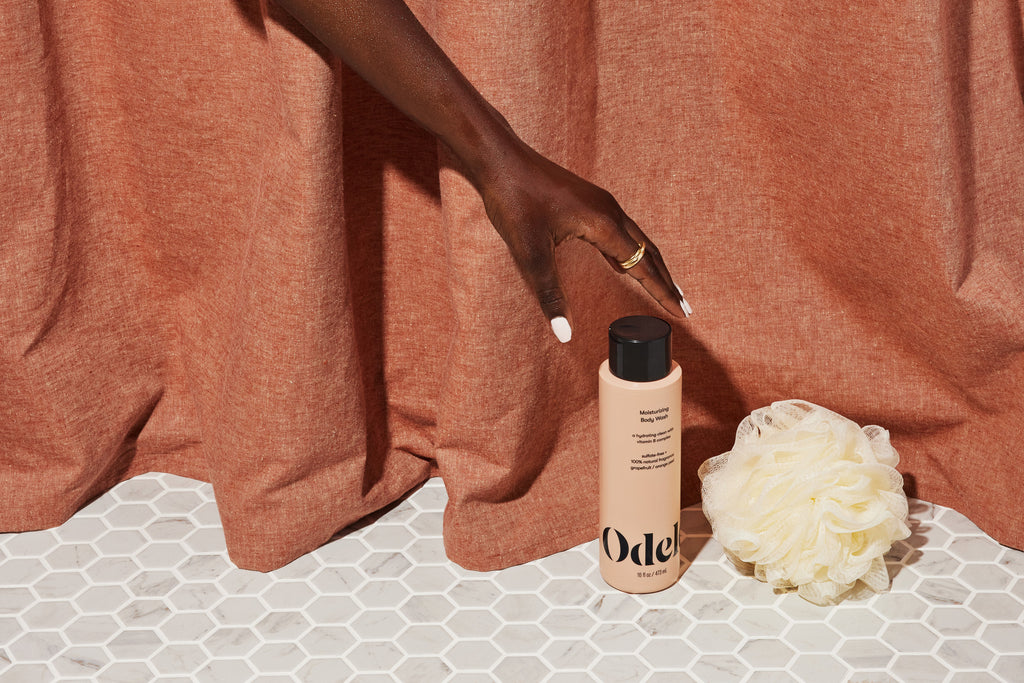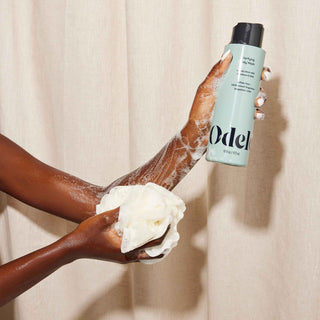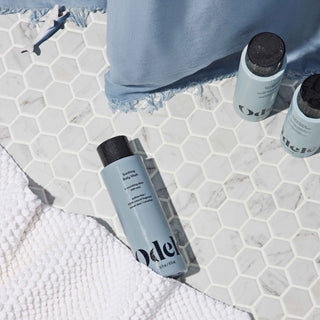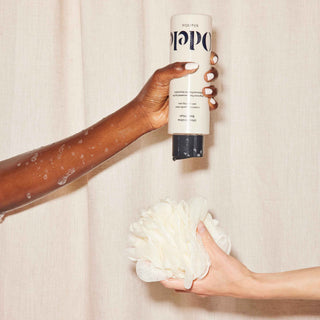Loofahs are anything but elusive. They’re in our errand aisles, tucked into care packages from friends and hanging out in our showers. Feeling a bit aloof on the pouf, we spoke with board-certified dermatologist Dr. Debra Jaliman about the hygienic-ness of loofahs and how long is too long to keep the same one on hand.
How did loofahs become a thing anyway?
Don’t call it a fad. The luffa gourd has been used for centuries around the world. Pagan Kennedy, who wrote a 2013 New York Times article about how the curious sponge came to be, references their popularity beginning here as early as the 1890s. “Friction bathing” was believed to cleanse the skin of any toxins or diseases. A journalist at that time named Nell Cusack reported she expected to see one “in every wash basin in the land.” While we’ve since swapped basins for baths, the desire to exfoliate and take care of our skin remains. (Chalk it up to the shorter hemlines and plunging necklines that came into vogue around the same time.)

Are loofahs hygienic?
Despite a history of longtime usage, loofahs are sigh not the healthiest shower accessory. “Loofahs are usually kept in a warm, moist environment (like your shower) that harbors bacteria. Plus, poufs have all those tiny crevices that can hide where that bacteria is growing,” shares Dr. Jaliman, who says this can lead to potential skin infections. If your loofah really lives for too long, mold may make its way inside the sponge and, when met with shower steam, trigger problems like headaches or indoor allergies.
A study published by the Journal of Clinical Microbiology also points out that while these shower sponges exfoliate your skin, they’re simultaneously clinging on to dead skin cells, which may also promote bacterial growth. Even natural loofahs (made of gourd) are susceptible to germs. But you can cut these germs’ all-inclusive tropical vacay short by maintaining some healthy habits.
Tips for a healthy loofah routine
To answer our question of how long you should use a loofah, here’s the quick + clean from Dr. Jaliman: “Clean your loofah once a week. Toss it once a month.” (Brb, writing that on our bathroom mirror.)
A bit more on how to keep a loofah clean:
- Rinse your loofah thoroughly once a week, if not after every use.
- Let it dry completely before the next use, preferably not in the moist (oops, we said it) conditions of your bathroom.
- Don’t store them away—this can cause more bacteria to grow.
- Replace your loofah about once a month.

A hygienic loofah is just one half of your healthy skin equation. Complement your cleanliness with one of our four body washes. Each formula was developed by skin concern (not age, gender, race or any other measure) and is pH-balanced to keep your delicate dermis feeling healthy long after you leave the shower. And while our body washes are a friend to all who share your bathroom, professionals recommend not sharing bath poufs—no matter how close you are.
What can I use instead of a loofah?
If loofahs work for your skin type, that’s great! Your shower, your rules. But one downside is feeling like you’re tossing out sponges left and right. You can opt for natural loofahs to be a bit kinder to the environment. “A natural loofah is totally biodegradable,” shares Dr. Jaliman, but warns that it is harsher on the skin. So your choice of loofah really depends on your skin type.
Sponge-curious and looking for something more hygienic or less abrasive? Dr. Jaliman recommends a baby washcloth as a loofah alternative. The tight fibers of a washcloth are less susceptible to bacteria and germs. Plus, washcloths are a lot easier to wash and dry because you can just throw them in the laundry (just like your hair brush). You can put a loofah in the dishwasher or washing machine (don’t put it in the dryer!), but we recommend a hand-washed bleach bath for ultra-cleanliness. Simply soak the sponge in a diluted bleach solution for five minutes and then rinse.











